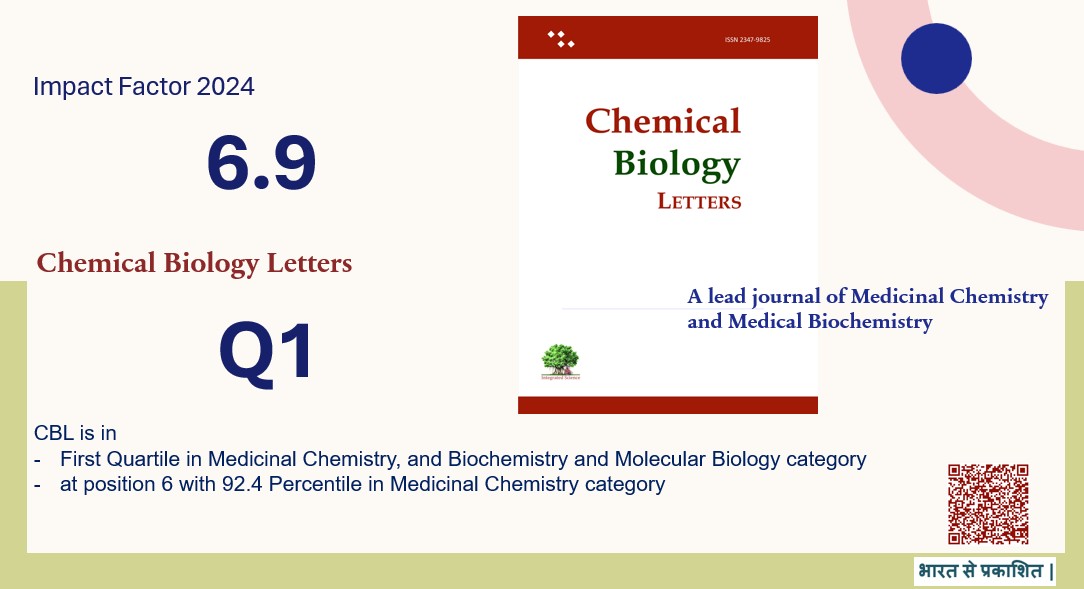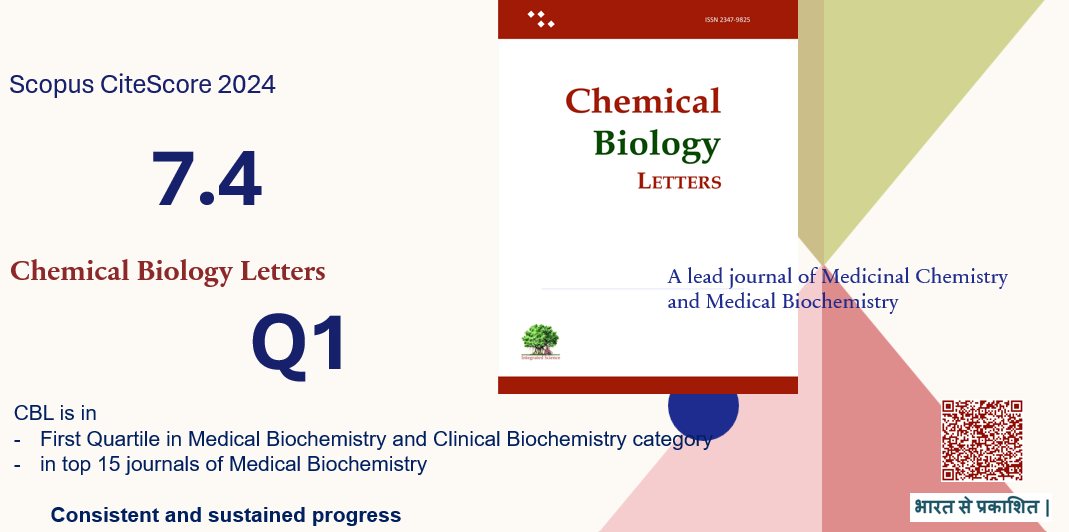Updates
-
CBL2025 Impact Factor 2024 matrices

The Clarivate Analytics (earlier Thomson Reuters) has released impact factor and other matrices 2024 for the journals indexed in Web of Science and Emerging Sources List. The Chemical Biology Letters (CBL) has been assigned an Impact Factor 6.9 and placed in the first quartile within the Medicinal Chemistry and Biochemistry and Molecular Biology category. This…
-
JIST2025 Scopus citescore matrices

The Scopus Journal Metrics for 2024 were released on June 2nd, 2025, and Journal of Integrated Science and Technology (JIST) has achieved a continuously improved performance. Good to share that JIST holds a very good rank with a CiteScore of 2.3 and reached in the Q1 first quartile within the Mathematics category. This places JIST…
-
CBL2025 Scopus citescore matrices

The Scopus Journal Metrics for 2024 were released on June 2nd, 2025, and Chemical Biology Letters (CBL) has maintained its sustained performance. Good to share that CBL holds the same rank with a CiteScore of 7.4 and sustains the first quartile within the Medical Biochemistry category. This places CBL among the top 15 journals in…
